
The Focke-Wulf Fw 44 is a 1930s German two-seat biplane known as the Stieglitz ("Goldfinch"). It was produced by the Focke-Wulf company as a pilot training and sport flying aircraft. It was also eventually built under license in several other countries.
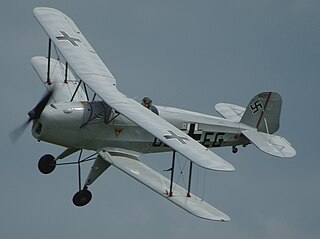
The Bücker Bü 131 "Jungmann" was a German 1930s basic training aircraft which was used by the Luftwaffe during World War II.
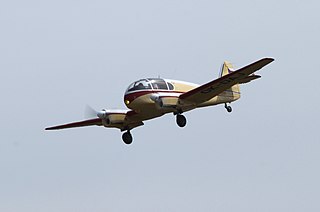
The Aero 45 was a twin-piston engined civil utility aircraft produced in Czechoslovakia after World War II. Aero Vodochody produced the aircraft in 1947–1951, after which the Let Kunovice rolled out these planes until 1961. In 1958 the Ae-45S became the first Czechoslovak plane to cross the Atlantic Ocean. It was the first product of the nation's postwar aviation industry and proved a great success, with many of the 590 produced being exported.
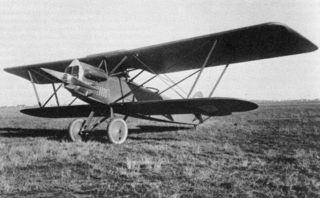
The Aero A.30 was a biplane light bomber and reconnaissance aircraft built in Czechoslovakia in the late 1920s. It originated as an attempt by Aero to improve the performance of the Aero A.11, but soon evolved into quite a different aircraft, larger and more powerful than its predecessor. The aircraft is readily distinguished from other related types by the difference in spans between its wings – the upper set being of much greater span than the lower.
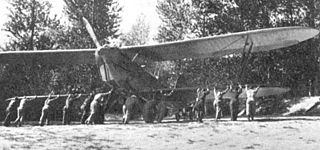
The Aero A.101 was a biplane light bomber and reconnaissance aircraft built in Czechoslovakia during the 1930s.

The Aero A.304 was a Czechoslovakian bomber aircraft that first flew in 1937. It had originally been developed as an airliner, the A.204, but when Aero could not find buyers for the design, it was militarised and successfully marketed to the Czechoslovak Air Force. It was also exported to Bulgaria, where it was known as the "Pelikan".
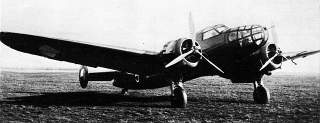
The Aero A.300 was a Czechoslovak bomber aircraft that first flew in 1938 as a much refined development of the A.304.

The Avia BH-21, first flown in 1925, was a robust biplane that served an important role in securing Czechoslovak national security during the period between World War I and World War II. As well as being a competent fighter, it was also an accomplished racer, winning several air races in 1925.
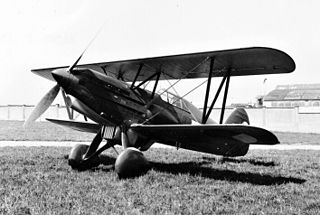
The Avia B-534 is a Czechoslovak biplane developed and manufactured by aviation company Avia. It was produced during the period between the First World War and the Second World War. The B-534 was perhaps one of the most well-known Czechoslovakian aircraft of the era.

The Slovak Air Force, between 1939 and 1945, was the air force of the short-lived World War II Slovak Republic. Its mission was to provide air support at fronts, and to protect Bratislava and metropolitan areas against enemy air attack.

The Avia B.135 was a Czechoslovak cantilever monoplane fighter aircraft. It was the production version of the Avia B.35 developed shortly before the war, based on the B.35/3 prototype but featuring a new all-metal wing.

The Avia B-34 was a biplane fighter aircraft built in Czechoslovakia in the early 1930s. It was the first design of František Novotný for the Avia company and although built only in small numbers, it paved the way for the Avia B-534.

The Avia BH-33 was a biplane fighter aircraft built in Czechoslovakia in 1927. It was based on the BH-21J which demonstrated promising results by combining the original BH-21 airframe with a licence-built Bristol Jupiter radial engine. Other than the peculiar Avia hallmark of having an upper wing with a shorter span than the lower, it was utterly conventional, even featuring a tail fin for the first time in a Pavel Beneš and Miroslav Hajn design.
The Letov Š-16 was a Czechoslovak single-engined, two-seat biplane bomber. It was designed by Alois Šmolík at Letov Kbely. The Š-16 first flew in 1926.

The Letov Š-28 was a Czechoslovak single-engined, two-seat reconnaissance aircraft. It was manufactured by Letov Kbely in a number of versions with different powerplants. The most important version was the Š-328, which was produced in relatively high quantities.
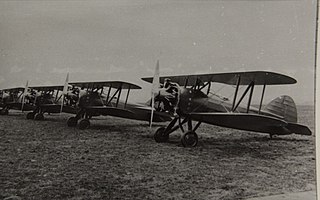
The Avia B.122 was a Czechoslovak single-seat biplane aerobatic aircraft, which was developed in the mid-1930s. It saw some service in the first years of World War II.

The Zlín Z-XII was a Czechoslovak two-seat sports aircraft, and the first major design success by the Zlínská Letecká Akciová Společnost (Zlín) aircraft manufacturing company, after its founding in Otrokovice after the takeover by the Bata Group.

The Praga BH-41, later redesignated E-41, was a military advanced trainer aircraft produced in Czechoslovakia during the 1930s.
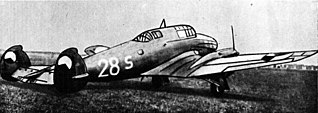
The Avia B.158 was a prototype Czechoslovak twin-engined light bomber aircraft of the 1930s. Only a single example was built and it was abandoned, following the German occupation of Czechoslovakia in March 1939.
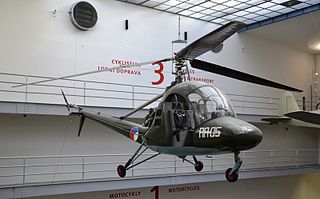
The Aero HC-2 Heli Baby is a two-seat light general-purpose utility helicopter, designed by engineer Jaroslav Slechta, and produced by the Czechoslovakian company Aero Vodochody in the 1950s. It has a three-bladed main rotor, and a two-bladed tail rotor. The helicopter has an entirely metal frame and cockpit, and windows made of Plexiglas. It was the first and the only Czechoslovakian-designed helicopter to be produced.



















